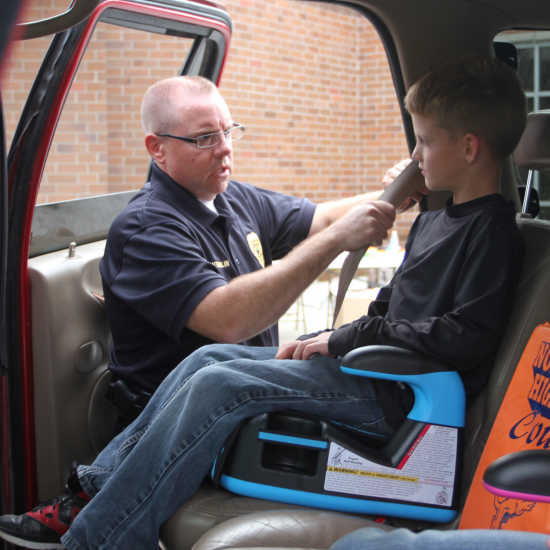GPD to conduct car seat clinic Thursday at Putnam County Hospital

With Child Passenger Safety Week already under way, the Greencastle Police Department will conduct its annual Car Seat Check Safety Day clinic on Thursday at Putnam County Hospital.
Certified child passenger safety technicians will be on hand at PCH from 5-7 p.m. to check car seats for proper installation and advise parents and caregivers on how to choose the right car seats and install them properly in their vehicles.
The event is free, thanks to support from an Automotive Safety grant, and is open to the public as part of GPD's participation in Child Passenger Safety Week (Sept. 13-19).
Statistics show motor vehicle accidents are the leading cause of death for children ages 1-13. Data from the U.S. Department of Transportation's National Highway Traffic Safety Administration (NHTSA) indicates at least two children 12 or younger are killed and 325 injured each day in passenger vehicles.
Correct use of proper car seats and booster seats can significantly reduce death and serious injury to children in our community, Hendershot noted.
Following NHTSA car seat recommendations that encourage parents and caregivers to keep children in their restraint types for as long as possible before moving them to the next type is another practice being urged by Hendershot.
For maximum safety, a parent or caregiver should have the car seat installation inspected by a certified Child Passenger Safety Technician -- such as those on hand Thursday at PCH -- to ensure children are in the right seats for their age and size. Youngsters up to age 13 should always ride in the back seat.
Proper child-seat usage is as follows:
Birth to 12 months -- For the best possible protection, a child under age one should always ride in a rear-facing car seat. There are different types of rear-facing car seats: infant-only seats can only be used rear-facing. Convertible and 3-in-1 car seats typically have higher height and weight limits for the rear-facing position, allowing you to keep your child rear-facing for a longer period of time.
1-3 years -- Your child should remain in a rear-facing car seat until the child reaches the top height or weight limit allowed by your car seat's manufacturer. This may result in many children riding rear-facing to age two or older. Once a child outgrows the rear-facing car seat, the child is ready to travel in a forward-facing car seat with a harness.
4-7 years -- Keep your child in a forward-facing car seat with a harness until the child reaches the top height or weight limit allowed by your car seat's manufacturer. Once a child outgrows the forward-facing car seat with a harness, it's time to travel in a booster seat, but still in the back seat.
8-12 years -- Keep your child in a booster seat until the child is big enough to fit in a seat belt properly. For a seat belt to fit properly the lap belt must lie snugly across the upper thighs, not the stomach. The shoulder belt should lie snug across the shoulder and chest and not cross the neck or face.
